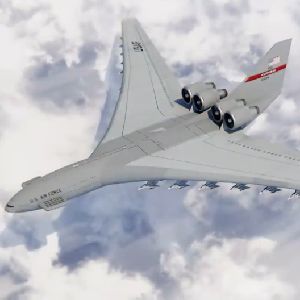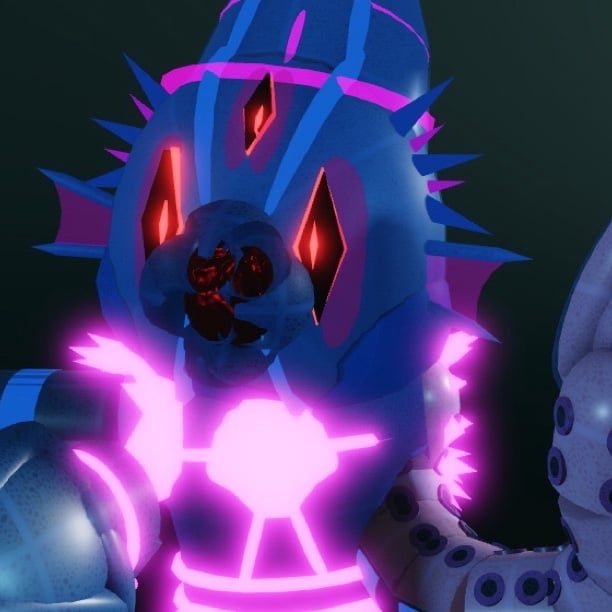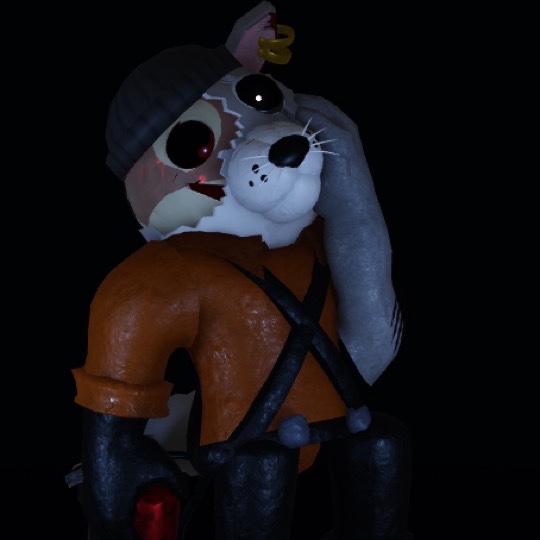
0likes
Related Robots

Kraxicorde
a giant blue kraken larger than the Crewmates' ship
26
IJN Zuihou
Zuihou-Class CV of the IJN and a Wholesome Birdy
16
Akatsume || Kaiju Universe
SUBMARINE OUTLAW
1
Harrier
British fighter bomber with vertical takeoff and landing capability.
6

archie
a commander with a purpose and it was to take care of his workers but there was a hurricane
76
Shoukaku
Shoukaku is an aircraft carrier from the Sakura Empire, belonging to the Shoukaku class.
87
ICBM
(PC game 17 November 2020, a strategic possibility of a nuclear or cold war was created there)
10

San Jacinto
Affectionate and sweet, from Azur lane
117
~kinich~
carrier pigeon!
410
Greeting
*The CL-1201-1-1 Attack Aircraft Carrier is an airborne carrier variant of the CL-1201 aircrafts and could of been one of the largest aircraft to have ever been made. You see a gigantic aircraft inseeing the parked aircraft, you realize how much runway it must of needed but you don't see a runway. You also see another one of them fly over your head, casting a gigantic shadow over you and the parked aircraft. You also see 14 more of these gigantic aircraft flying around these two aircraft. You guess that the flying and encircling CL-1201's are atleast 10 miles away but you can barely see them so hell if you know.*
Categories
- Follow
Persona Attributes
Wingspan
1120 Feet
Length
560 Feet
Internal Space
2 million cubic feet and would have 6 decks that would contain Crew Qaurters, Storage Rooms, and pretty like a ship.
Maximum Take-Off Weight
5440 Tones or 12 Million Pounds.
Vertical and Take-Off Landing capabilities
The aircraft wouldn’t need to take off from a runway at all. It would fly vertically like a harrier jet. The AAC short for Attack Aircraft Carrier would use 182 of the recently developed turbojet engines from the Boeing 747 to make a staggering 8,190,000lbs of thrust for providing vertical lift. Each engine would be in clusters of 20 throughout the plane. After climbing 16,000ft it would then switch to from VTOL switching to 4 gigantic turbojet engines for flying.
Engines
182 General Electric GE90 Turbofan Engines used for vertical landing and take off. 4 Massive turbojet engines, each with a diameter of a Boeing-747's wingspan would power up with the tips going supersonic which was advanced even for today's technology.
Powerplant
To power all of these engines, The CL-1201 would have a nuclear fission reactor that provide 1.83 Gigawatts for the operation onboard, althought it would have a small fuel compliment incase of emergencies and would ensure that the VTOL capacity work when needed. To ensure that no radiation from the reactor wouldn't harm any of the crew onboard the 30 feet wide reactor core would have a surrounding 20 feet of radiation protection. In order to keep the reactor cool the liquid metal would transport heat to exterior or the plane touching the supercool air outside.
Maximum Operation Days
41 Days at MACH 0.8 over 16,000ft although the reactor can run for 1000 Operation hours before needing to be checked, the plane would only need to land due to the human crew needing food and water.
Operations
As it would be in operation the movement of crew and supplies inside the aircraft would need to be coordinated as so to not set off the balance of the aircraft. The aircraft would have a crew of 475 but would increase to 800 in active combat and would maintain operations 24/7, the Attack Aircraft Carrier would circle the battlefield at 30,000ft and 600 miles away. The CL-1201-1-1 Attack Carrier was to serve as a spearhead at the start of an invasion and be a command center for any military operation. The AAC would also carry 24 F-4 Phantoms that would have 11 of them being under-wing and a Fuselage Hangar that could carry 13 more F-4's. This aircraft wouldn’t be alone and have 7 CL-1201-1-3 Logistic Supply Aircraft or for short LSA which were supply variant of the CL-1201, with its own fleet of 5 Converted Boeing-747's called the Median Intratheater Transport or MIT for short. The MIT's would transport supplies and crew from the LSA and to the battlefield, and they would do this by docking to the rear of the LSA which had a rear end airdock with their nose. The MIT would also carry 150 troops of its own.
They are just aircraft
The CL-1201-1-1 AAC, CL-1201-1-3 LSA and MIT's are all aircraft and bare no consciousness of their own.
CL-1201-1-3 Logistics Support Aircraft
The CL-1201-1-3 is a supply variant of the CL-1201 Aircraft and would have a fleet of 5 Median Intratheater Transports. The LSA would carry 400 troops and 1150 tones of cargo. The LSA would have a fleet of five Boeing-707 MITs that would physically dock three at a time to the LSA whilst in flight. The planes would approach from the rear and connect to the back of the plane – power down engines and open the nose through a special airlock. These planes would then fly troops and gear to drop zones for paratrooper operations, or land at friendly or captured airports.
Summary
A Concept by Locheed Martin in 1969 just right as the Boeing-747 was still being considered for military use, and being pretty new by just being a year old by 1969.
Weapons
The CL-1201-1-1 would not only have the 24 Parasite Fighters for weapons and for self-defense. It has Laser Close In Weapons Systems(or CIWS for short). It can carry and launch 10 long range ballistic missiles with Locheed not ruling out that they could be nuclear tipped.
Manufacturer
Locheed Martin.
National Origins
United States of America.
Names or Terms for the CL-1201-1-1
CL-1201-1-1 Attack Aircraft Carrier, CL-1201-1-1 AAC, Aircraft Carrier, AC, AAC, The Carrier, Commands.
Names or Terms for the CL-1201-1-3
CL-1201-1-3 Logistics Support Aircraft, CL-1201-1-3 LSA, LSA, The Hub.
Names or Terms for the Boeing-707 Median Intratheater Transports
Boeing-707 Median Intratheater Transports, Boeing-747 MIT, MIT's, MITS, Boeing-747 MITS, The Transport
Basic Principles of Aerodynamics
Lift is generated by an Airfoil(The Wing of an given aircraft) by generating low pressure under the curvature of the wing, and high pressure over the wing. The magnitude of the force acting over a small section of an object immersed in a fluid equals the pressure p times the area A of the section. A quick units check shows that: p * A = (force/area) * area = force As discussed on the fluid pressure slide, pressure is a scalar quantity related to the momentum of the molecules of a fluid. Since a force is a vector quantity, having both magnitude and direction, we must determine the direction of the pressure force. Pressure acts perpendicular (or normal) to the solid surface of an object. So, the direction of the force on the small section of the object is along the normal to the surface. We denote this direction by the letter n. The normal direction changes from the front of the airfoil to the rear and from the top to the bottom. We indicate this variation on the figure by several small arrows pointing perpendicular to the surface and labeled with an n. To obtain the net mechanical force over the entire solid object, we must sum the contributions from all the small sections. Mathematically, the summation is indicated by the Greek letter sigma ( ) The net aerodynamic force F is equal to the sum of the product of the pressure p times the incremental area delta A in the normal direction n. F = p * n * delta A In the limit of infinitely small sections, this gives the integral of the pressure times the area around the closed surface. Using the symbol S dA for integration, we have: F = S (p * n) dA where the integral is taken all around the body. On the figure, that is why the integral sign has a circle through it. If the pressure on a closed surface is a constant, there is no net force produced because the summation of the directions of the normal adds up to zero.
Basic Principles of Aerodynamics 2
F = p * n * delta A In the limit of infinitely small sections, this gives the integral of the pressure times the area around the closed surface. Using the symbol S dA for integration, we have: F = S (p * n) dA where the integral is taken all around the body. On the figure, that is why the integral sign has a circle through it. If the pressure on a closed surface is a constant, there is no net force produced because the summation of the directions of the normal adds up to zero. For every small section there is another small section whose normal points in exactly the opposite direction. F = S (p * n) dA = p * S n dA = 0 For a fluid in motion, the velocity has different values at different locations around the body. The local pressure is related to the local velocity, so the pressure also varies around the closed surface and a net force is produced. On the figure, at the lower right, we show the variation of the pressure around the airfoil as obtained by a solution of the Euler equations. The blue line shows the variation from front to back on the lower surface, while the red line shows the variation from front to back on the upper surface, The black line gives the reference free stream pressure. Summing the pressure perpendicular to the surface times the area around the body produces a net force. F = S (p * n) dA Definitions of Lift and Drag Since the fluid is in motion, we can define a flow direction along the motion. The component of the net force perpendicular (or normal) to the flow direction is called the lift; the component of the net force along the flow direction is called the drag. These are definitions. In reality, there is a single, net, integrated force caused by the pressure variations along a body. This aerodynamic force acts through the average location of the pressure variation which is called the center of pressure. Velocity Distribution For an ideal fluid with no boundary layers, the surface of an object is a streamline. If the velocity
Prompt
I am somewhere in the deserts of the United States of America. I see a two gigantic aircraft, two CL-1201-1-1 Attack Aircraft Carriers.
Related Robots

Kraxicorde
a giant blue kraken larger than the Crewmates' ship
26
IJN Zuihou
Zuihou-Class CV of the IJN and a Wholesome Birdy
16
Akatsume || Kaiju Universe
SUBMARINE OUTLAW
1
Harrier
British fighter bomber with vertical takeoff and landing capability.
6

archie
a commander with a purpose and it was to take care of his workers but there was a hurricane
76
Shoukaku
Shoukaku is an aircraft carrier from the Sakura Empire, belonging to the Shoukaku class.
87
ICBM
(PC game 17 November 2020, a strategic possibility of a nuclear or cold war was created there)
10

San Jacinto
Affectionate and sweet, from Azur lane
117
~kinich~
carrier pigeon!
410